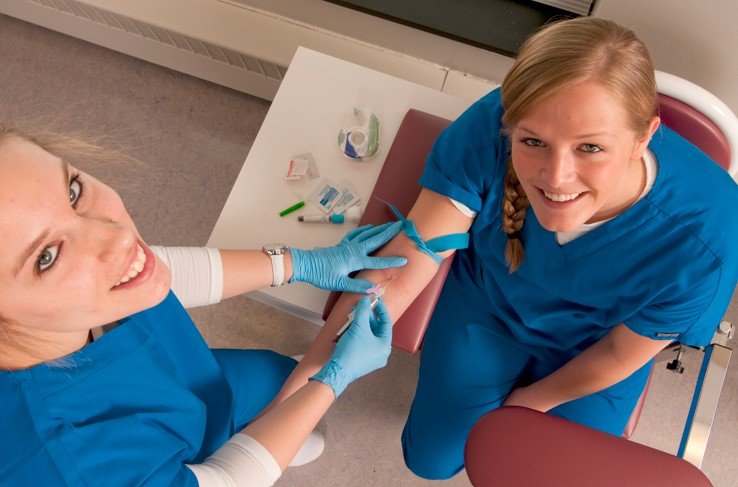Strategies for Ensuring Adequate Supplies and Equipment for Phlebotomy Training in Hospitals
Summary
- Hospitals must prioritize inventory management to ensure they have sufficient supplies and equipment for ongoing training in advanced phlebotomy techniques.
- Implementing automated tracking systems can help hospitals monitor stock levels, anticipate demand, and prevent shortages.
- Collaborating with vendors, conducting regular audits, and investing in staff training are essential strategies for hospitals to maintain a reliable Supply Chain for Phlebotomy Equipment.
Introduction
Hospitals play a crucial role in providing patient care, and having an adequate supply of supplies and equipment is essential to ensuring the efficiency and effectiveness of medical procedures. In the context of advanced phlebotomy techniques, hospitals must ensure they have sufficient resources to support ongoing training for new staff. This article will explore strategies that hospitals in the United States can implement to maintain an adequate supply of supplies and equipment for phlebotomy training.
Inventory Management
Effective inventory management
One of the key challenges hospitals face is maintaining optimal levels of supplies and equipment for training new staff in advanced phlebotomy techniques. Effective inventory management is crucial to ensure that hospitals have access to the necessary resources when needed. Implementing automated tracking systems can help hospitals monitor stock levels, anticipate demand, and prevent shortages. By utilizing technology to track inventory, hospitals can streamline their Supply Chain and ensure that Phlebotomy Equipment is readily available for training purposes.
Anticipating demand
In addition to utilizing automated tracking systems, hospitals should also develop strategies for anticipating demand for phlebotomy supplies and equipment. By analyzing historical data on training schedules and staff turnover rates, hospitals can forecast their future requirements and adjust their inventory levels accordingly. Anticipating demand is essential to prevent stockouts and ensure that hospitals have a sufficient supply of resources to support ongoing training activities.
Vendor Collaboration
Establishing partnerships
Collaborating with vendors is another important strategy for hospitals to ensure they have a reliable Supply Chain for Phlebotomy Equipment. By establishing partnerships with trusted suppliers, hospitals can negotiate favorable terms and access a wide range of products. Vendors can also provide valuable insights into new technologies and trends in Phlebotomy Equipment, helping hospitals stay ahead of the curve in training new staff.
Regular audits
Conducting regular audits of phlebotomy supplies and equipment is essential to identify any Discrepancies or potential issues in the Supply Chain. By reviewing inventory records, hospitals can pinpoint areas of improvement and implement corrective actions to prevent shortages or overstocking. Regular audits also help hospitals track usage patterns and optimize their procurement processes to ensure a steady supply of resources for phlebotomy training.
Staff Training
Investing in education
Investing in staff training is a fundamental aspect of ensuring hospitals have sufficient supplies and equipment for phlebotomy training. By providing comprehensive education programs on advanced phlebotomy techniques, hospitals can empower their staff to perform procedures effectively and efficiently. Training sessions should include hands-on practice with the latest equipment and tools, ensuring that staff are proficient in using the resources available to them.
Continuous improvement
Continuous improvement is key to maintaining a high standard of phlebotomy training within hospitals. By soliciting feedback from staff and incorporating suggestions for improvement, hospitals can refine their training programs and enhance the overall learning experience. Staff should be encouraged to participate in continuous education opportunities to stay up-to-date on the latest advancements in phlebotomy techniques and equipment.
Conclusion
In conclusion, hospitals must prioritize inventory management, collaborate with vendors, and invest in staff training to ensure they have sufficient supplies and equipment for ongoing training in advanced phlebotomy techniques. By implementing these strategies, hospitals can establish a reliable Supply Chain and support the professional development of their staff. Maintaining an adequate supply of resources is essential to delivering high-quality patient care and achieving positive outcomes in phlebotomy procedures.

Disclaimer: The content provided on this blog is for informational purposes only, reflecting the personal opinions and insights of the author(s) on the topics. The information provided should not be used for diagnosing or treating a health problem or disease, and those seeking personal medical advice should consult with a licensed physician. Always seek the advice of your doctor or other qualified health provider regarding a medical condition. Never disregard professional medical advice or delay in seeking it because of something you have read on this website. If you think you may have a medical emergency, call 911 or go to the nearest emergency room immediately. No physician-patient relationship is created by this web site or its use. No contributors to this web site make any representations, express or implied, with respect to the information provided herein or to its use. While we strive to share accurate and up-to-date information, we cannot guarantee the completeness, reliability, or accuracy of the content. The blog may also include links to external websites and resources for the convenience of our readers. Please note that linking to other sites does not imply endorsement of their content, practices, or services by us. Readers should use their discretion and judgment while exploring any external links and resources mentioned on this blog.
